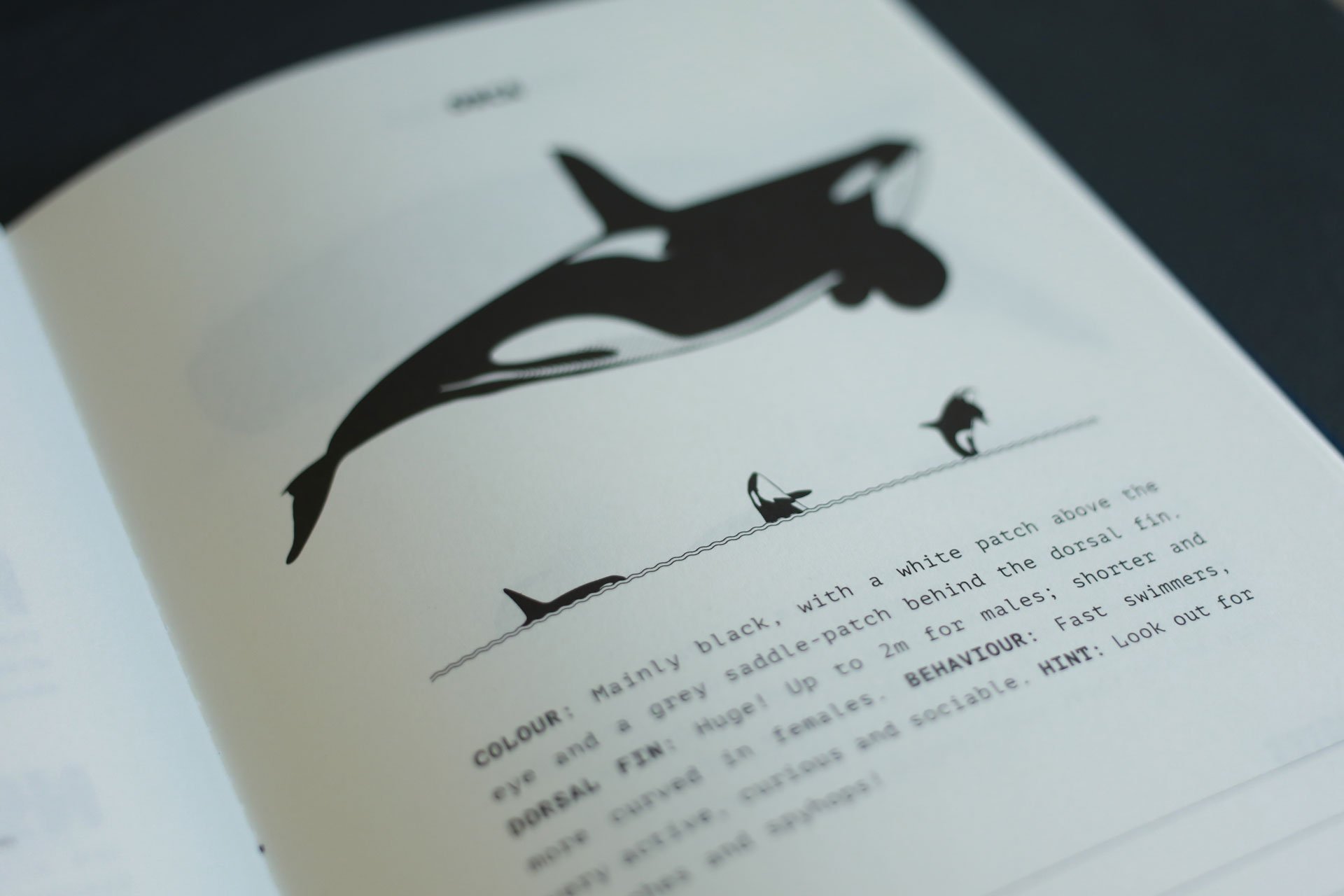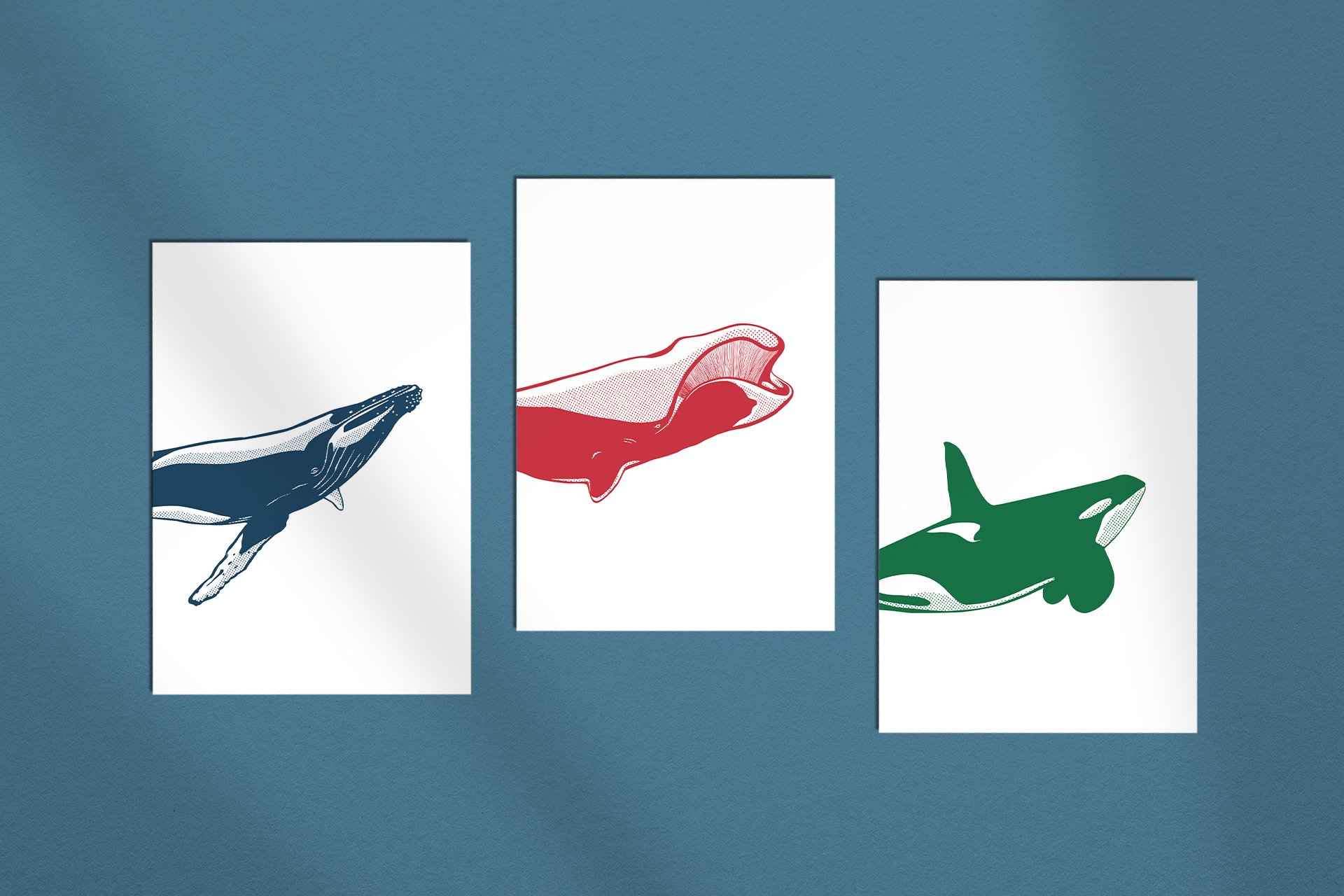BELUGAS
The Canaries of the Sea: They are only seen in the Arctic Oceans – but also in the Saint Lawrence in Quebec!
Photo: Oliver Dirr / Whaletrips
REVIEW: BElugas
Belugas can move their lips and turn their heads to apparently create a mimic. They are also quite communicative and playful.
Belugas are considered by humans to be the most sympathetic of all whales. However, this is a problem for belugas, because even in the 21st century, people still think it's a good idea to catch belugas in the wild, lock them up in an aquarium for life and teach them boring tricks.
And yet belugas can't help it. The only reason we find them so likeable is that they have movable lips, can move their heads freely and even frown. This makes a lot of facial expressions possible, which makes belugas appear very expressive from a human perspective. We see a smile where there is actually none.
Belugas are also very conspicuous acoustically, which makes them appear downright cheerful from a human perspective: they emit a variety of whistles, squeaks and flutes that are so loud that they can often even be heard above water or through the hull of a ship. Their nickname, "canaries of the sea", is just the next sympathetic trivialisation.
“Belugas are so curious and playful that they sometimes concentrate so much on a boat that they forget about their own offspring. In Quebec, boats must therefore keep at least 400 metres away and are not allowed to actively approach the belugas.”
Belugas in the aquarium are a dreary, sad and frustrating affair: large, graceful animals, locked up in tanks that are far too small, separated from their families, bored by silly tricks, often just manically swimming back and forth in circles. Belugas do not belong in an aquarium any more than orcas do.
And it is not even difficult to observe them in the wild, at least in some places. Although the large populations in the Arctic Ocean are rather difficult to reach, there are also some localised populations, for example in Manitoba and Québec in Canada, which can be visited with great reliability throughout the summer.
Belugas look a little misshapen and bulky in the general view. However, usually only the head and back are visible.
Belugas in the wild are curious, playful animals that can be very active on the surface. They often swim close to boats and kayaks, and interactions are also possible. Belugas are so curious and playful that they sometimes concentrate so much on a boat that they forget about their own offspring.
In Quebec, for example, boats must therefore keep a distance of at least 400 metres, as they are not allowed to actively approach the belugas anyway. Conversely, should the belugas approach, boats are not allowed to stay near them for more than five minutes. At least that's the theory.
Belugas usually travel in groups of 5 to 20 animals, but in summer several hundred can sometimes be observed in bays and estuaries.
Photo: Oliver Dirr / Whaletrips
Size
Belugas grow to 3 to 5 metres, males are larger than females. Maximum weight: 1 tonne.
Colour
White or light yellow all round, young animals are initially grey and only become lighter when they are older.
FORM
Somewhat bulky body with small head, distinct melon and very short muzzle.
Blow
Inconspicuous but noisy blow – maximum one metre high.
Fin
Belugas do not have a dorsal fin, but instead have a clearly recognisable hump.
FLUKE
Slightly heart-shaped, sometimes with a dark edge. The older belugas get, the more curved the fluke becomes.
Behaviour
Often curious and playful, they like to approach boats and kayaks, interactions are possible. Active on the surface, rarely breach.
Dives
Usually several short breaths at the surface, followed by a slightly deeper dive of about one minute.
Numbers
There are probably around 150,000 animals worldwide, but belugas are regionally threatened with extinction.
Photo: Oliver Dirr / Whaletrips
CHECKLIST: Belugas
Due to their bright colour and expressive face, belugas cannot be mistaken for anything else – but especially between ice they are not easy to spot.
Belugas prefer to stay in calm, coastal waters, often in bays or estuaries, but almost never on the open sea. Usually 5 to 20 animals are encountered, in estuaries often large groups with hundreds or thousands of animals. Due to their light colour, they cannot be misidentified, although they are not necessarily easy to spot near the ice edge.
“Belugas are particularly conspicuous due to their numbers and frequent spy-hopping on the surface. They also frequently strike the water with their flukes and flippers.”
Belugas are rather slow swimmers that spend most of their time at the surface. They normally make about 5 to 6 shallow dives per minute, followed by a slightly deeper dive for about 1 minute.
The movements are quite flat, the head is clearly visible when surfacing, then there is only a white hump that appears briefly and disappears again immediately. The fluke is hardly ever visible when diving.
Belugas are more conspicuous due to their numbers and frequent spy-hopping on the surface. They also frequently strike the water with their fluke and flippers. Breaches, on the other hand, are very rare.
Photo: Oliver Dirr / Whaletrips
Where and when: Belugas
Belugas can be observed very well in the east and north of Canada in summer – especially from Churchill, Manitoba and Tadoussac, Québec.
Belugas are mainly found in the Arctic Ocean and are generally found near the coast or close to the ice. They rarely travel far from the coast. Their migrations are short and depend mainly on the extent of the ice.
In summer, they often retreat to shallow fjords, bays and estuaries, where hundreds or even thousands of animals gather in a confined space. In winter, they follow the loose pack ice.
The ideal companion for your next whale trip: In our shop you will find our TRAVEL NOTES in five great colours – with the most important whale information for your trip and plenty of space for your own notes, observations and memories. Order now!
There are a few local populations, for example in Cook Inlet, Alaska and in the Gulf of St Lawrence and Hudson Bay in Canada. The population in Alaska comprises only a few hundred animals and is threatened with extinction.
The populations in Canada, on the other hand, are largely stable and can best be observed in summer from Churchill, Manitoba (Hudson Bay) and Tadoussac, Québec (Gulf of St. Lawrence).
The belugas of the Gulf of St Lawrence are by far the southernmost living belugas in the world. They are sighted very reliably throughout the summer from Tadoussac to Cap Gaspé. In many places, they can also be observed very well from land – all you need is a bit of luck and patience.
Theoretically, you also have a good chance of spotting belugas off the coasts of Svalbard and Greenland, but these areas are more popular with tourists in the summer, when the ice and therefore the belugas are much further north.
Even more Whales
〰️
Even more Whales 〰️
Whaletrips Shop
The ideal Companion for your whale trip
All the whale facts you need while on the road – with plenty of space for own thoughts and observations!
Whaletrips Shop
Our Whales as Cards and Stickers
Colourful, finely illustrated, ready to stick on: Our whales are now available as stickers and greeting cards!
Whaletrips Shop
Beautiful whale Notebooks
Whether for travelling or at home: our high-quality whale notebooks come in five beautiful colours!
Whaletrips Shop
Our favourite photos for your home
Brightens any wall: a selection of our favourite motifs is available as elegant fine art print for your home.











